Integration of 3D Elements in Real Environments
A course by Diego Velasquez , Director, MAKACO Animation and VFX Studio

Learn a VFX process for integrating 3D objects into real scenes using 3ds Max, Nuke, and V-Ray
The line separating reality and fiction has become increasingly blurry with the magic offered by the visual effects of television and film. Creating shocking explosions, flying cars, and other fantastic elements for video is what Diego Velásquez specializes in, from his Creative Director role of the award-winning VFX and animation studio MAKACO.
In this course, learn to insert 3D elements into real scenes by playing with light and having them interact with their environment. Diego guides you through the animation process of a futuristic vehicle using 3ds Max, Nuke, and V-Ray software. By the end, you’ll be capable of creating incredible effects with a hyper-realistic look.
What will you learn in this online course?
32 lessons & 16 downloads
- 100% positive reviews (38)
- 1,416 students
- 32 lessons (6h 48m)
- 16 additional resources (5 files)
- Online and at your own pace
- Available on the app
- Audio: Spanish
- Spanish · English · Portuguese · German · French · Italian · Polish · Dutch · Turkish
- Level: Beginner
- Unlimited access forever
What is this course's project?
Create an animation of a futuristic moving vehicle in a real-life video using 3ds Max and Nuke software.
Projects by course students
Who is this online course for?
To everyone interested in special effects, animation, and digital composition.
Requirements and materials
To take this course, basic knowledge of 3D animation and digital composition is necessary.
Regarding materials, you will need a computer with 3ds Max and the V-Ray rendering engine, as well as Nuke (The Foundry) installed.

Reviews

Diego Velasquez
A course by Diego Velasquez
Passionate about art and science, Diego Velásquez of Peru discovered 3D animation to be the perfect combination of mathematics, drawing, and storytelling, establishing a professional career focused on the cinema and advertising industries.
In 2011, he founded MAKACO, a studio dedicated to the post-production of 3D animation and special effects. He has won several international awards, including gold for Best Foreign Language Commercial and bronze for Branded Entertainment of the Year at the Shots Awards.
Content
-
U1
Introduction
-
Presentation
-
Influences
-
What will we do in the course?
-
-
U2
Learn all about 3ds Max and Nuke
-
Nuke 1 interface review
-
Nuke 2 interface review
-
3ds Max interface review
-
Formats, framerates and files
-
-
U3
Let's do it
-
Camera tracking 1
-
Camera tracking 2
-
Camera tracking 3
-
Import of data and model
-
Animation 1
-
Animation 2
-
Lighting 1
-
Lighting 2
-
Lighting 3
-
Lighting 4
-
Render
-
Compositing 1
-
Compositing 2
-
Compositing 3
-
Compositing 4
-
Compositing 5
-
Compositing 6
-
-
U4
Let's fool the human eye!
-
3D Particles 1
-
3D Particles 2
-
3D Particles 3
-
3D Particles 4
-
3D Particles 5
-
3D Particles 6
-
Additional VFX 1
-
Additional VFX 2
-
-
FP
Final project
-
Integration of 3D Elements in Real Environments
-
What to expect from a Domestika course
-
Learn at your own pace
Enjoy learning from home without a set schedule and with an easy-to-follow method. You set your own pace.
-
Learn from the best professionals
Learn valuable methods and techniques explained by top experts in the creative sector.
-
Meet expert teachers
Each expert teaches what they do best, with clear guidelines, true passion, and professional insight in every lesson.
-
Certificates
PlusIf you're a Plus member, get a custom certificate signed by your teacher for every course. Share it on your portfolio, social media, or wherever you like.
-
Get front-row seats
Videos of the highest quality, so you don't miss a single detail. With unlimited access, you can watch them as many times as you need to perfect your technique.
-
Share knowledge and ideas
Ask questions, request feedback, or offer solutions. Share your learning experience with other students in the community who are as passionate about creativity as you are.
-
Connect with a global creative community
The community is home to millions of people from around the world who are curious and passionate about exploring and expressing their creativity.
-
Watch professionally produced courses
Domestika curates its teacher roster and produces every course in-house to ensure a high-quality online learning experience.
FAQs
What are Domestika's online courses?
Domestika courses are online classes that allow you to learn new skills and create incredible projects. All our courses include the opportunity to share your work with other students and/or teachers, creating an active learning community. We offer different formats:
Original Courses: Complete classes that combine videos, texts, and educational materials to complete a specific project from start to finish.
Basics Courses: Specialized training where you master specific software tools step by step.
Specialization Courses: Learning paths with various expert teachers on the same topic, perfect for becoming a specialist by learning from different approaches.
Guided Courses: Practical experiences ideal for directly acquiring specific skills.
Intensive Courses (Deep Dives): New creative processes based on artificial intelligence tools in an accessible format for in-depth and dynamic understanding.
When do the courses start and when do they finish?
All courses are 100% online, so once they're published, courses start and finish whenever you want. You set the pace of the class. You can go back to review what interests you most and skip what you already know, ask questions, answer questions, share your projects, and more.
What do Domestika's courses include?
The courses are divided into different units. Each one includes lessons, informational text, tasks, and practice exercises to help you carry out your project step by step, with additional complementary resources and downloads. You'll also have access to an exclusive forum where you can interact with the teacher and with other students, as well as share your work and your course project, creating a community around the course.
Have you been given a course?
You can redeem the course you received by accessing the redeeming page and entering your gift code.



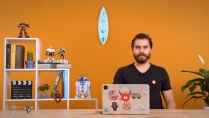
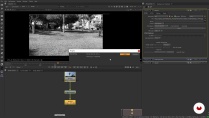
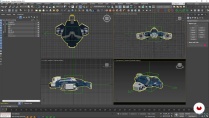
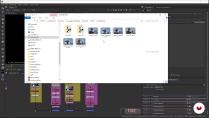
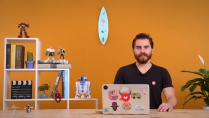


Acabo de terminar el curso, uno de los más completos que he visto.
Me gusta mucho que usa solo las herramientas nativas de los programas y da todo el material para poder completar el curso. (Excepto el "X_Distort", no dice cómo instalarlo, pero es relativamente sencillo).
Me gustaría tomar otros cursos de este mismo profesor.
Muy buen Curso, bien explicado por parte de Diego Velásquez, a la espera de un nuevo curso de NUKE!
Chevere!
This course came at the right time...It's amazing. I Can boldly start my VFX course with Max and Nuke pipeline because of this. I speak English but hearing Him speak even though not in English is Beautiful. Thank You Diego. " Na Boss You Be" - Nigerian slang
Muy buen curso , todo esta muy bien estructurado el unico pero que le pongo es que utiliza algunos gizmos en nuke que no vienen de serie y tampoco explica como instalarlos ya que me pase algunas horas intentando instalar uno y no pude. Por lo demas esta muy bien